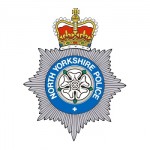Adding to the NYE’s reputation as a leading internet news magazine for investigative journalism and historical cold case investigations, we are very happy to welcome guest author Chris Clark.
Chris is a retired Police Intelligence Officer with twenty-eight years service. In retirement, he has pursued his interest in unsolved cases.
He has co-authored a book “The Face Of Evil” – the true story of serial killer Robert Black which is to be published in August 2017.
He is currently working on a book investigating the “Hammersmith nude murders” of 1964 to 1965. He co-authored the book “Yorkshire Ripper The Secret Murders” with award winning investigative journalist Tim Tate, which was recently reviewed for the NYE by Tim Hicks (Review here), who was very impressed.
Following correspondence with Tim over the review, Chris has agreed to team up with our crime reporter Tim Hicks to provide – as far as is possible with the information available – a definitive list of the full extent of the crimes committed by the Yorkshire Ripper, not just those for which he was convicted. For more information on Chris, please see his website here.
Yorkshire Ripper: How Many Victims?
By Tim Hicks and Chris Clark
Background: The Yorkshire Ripper
The Yorkshire Ripper investigation in 1975 – 1981, was up to that time the biggest police investigation ever undertaken in Britain. Peter Sutcliffe -a married lorry driver from Bradford- was convicted of murdering thirteen women and attempting to murder another seven between 1975 and 1980.
For those that are unfamiliar with the Yorkshire Ripper case, there is a very good documentary here.
Peter Sutcliffe was convicted in 1981 of seven attempted murders and thirteen murders. He confessed to another two attempted murders and it has been stated in the press that West Yorkshire Police (WYP) are confident they have enough evidence to send a file to the CPS on another two, but have decided not to proceed to prosecution. The list of cases where there is no doubt that Sutcliffe is responsible is below in chronological order:

Sutcliffe was a lorry driver who drove all over the country and who had lived in London. Yet, as shown below, all of these offences are tightly grouped around Manchester, Bradford, Halifax, Leeds and Huddersfield in the WYP and Greater Manchester Police (GMP) areas.
The attempted murder of a prostitute in Sheffield which resulted in his arrest was in the South Yorkshire Police (SYP) area. It is included in Table 1 for completeness.

Following the conclusion of the trial, the Home Office tasked Chief Constable Lawrence Byford of HM Inspectorate of Constabulary to conduct a review of the WYP Yorkshire Ripper investigation. Sir Lawrence found there was an “unexplained lull” in the Ripper’s activities between 1969 and 1975:
“We feel it is improbable that the crimes in respect of which Sutcliffe has been charged and convicted are the only ones attributable to him. This feeling reinforced by examining the details of a number of assaults on women since 1969 which in some ways, clearly fall into the established pattern of Sutcliffe’s overall modus operandi…”
“It is my firm conclusion that between 1969 and 1980 Sutcliffe was probably responsible for many attacks on women, which he has not admitted, not only in West Yorkshire and Manchester but also in other parts of the country….”
Sir Lawrence went on to deduce that Sutcliffe could have been responsible for a further 13 offences. However, that section of his report specifying the names of these thirteen victims and the reasoning behind his deductions has never been released to the public. The investigations by Assistant Chief Constable Samson and the then by Assistant Chief Constable Hellawell of WYP were also never released.
There has been a lot of speculation/deduction on Sutcliffe’s other victims, but even now, there is no consensus on his total number of victims other than those contained in Table 1 above. There are a number of reasons for this:
Sutcliffe’s Modus Operandi
- Sutcliffe was to some degree forensically aware. He took care not to leave evidence behind that could link him to the crime scenes. Hence his return to the body of Jean Jordan to retrieve a £5 note he had given her, which he realised could have been traced to him from the number. He always removed the weapon(s) from the crime scene.
- Sutcliffe changed cars regularly.
- Sutcliffe deliberately changed his modus operandi (see table 3 below), to ensure uncertainty over which crimes were his.
- Sutcliffe operated across England as part of his work and social life. He did not limit his travel to Yorkshire and Manchester.
Failings in the original investigation by WYP
- It is now clear that WYP CID were not up to the job of running a complex major investigation. Two of the major miscarriages of justice at the time – the M62 coach bombing and the conviction of Stefan Kiszko were perpetrated by the same detectives from WYP CID that worked on the ripper investigation. In 1980 Home Secretary William Whitelaw appointed Sir Lawrence Byford to review and re-organise the ripper investigation. To quote Chris Clark and Tim Tate in “Yorkshire Ripper The Secret Murders”
“Byford quickly spotted that the senior West Yorkshire Police management was not capable of running Britain’s biggest manhunt: He side-lined the Chief Constable Ronald Gregory and brought in a new team to run the inquiry”.
- The first two offences that the police liked to the Yorkshire Ripper were the murders of Prostitutes Wilma McCann and Emily Jackson, (serials 5 and 6 in Table 1 above). This led to WYP jumping to the (erroneous) conclusion that the offender was motivated by a hatred of prostitutes, when in fact:
- Although Sutcliffe hated prostitutes, this was not the primary motive for his offending. Sutcliffe was a necrophiliac, motivated by an overwhelming sexual need to obtain arousal with dead bodies. Hence the presence of semen at some of the crime scenes and why when he was arrested, he was wearing underwear that he had modified to leave his genitalia exposed, to facilitate masturbation over the corpse. This initial error and a refusal/failure to re-assess then abandon this deduction until late in the investigation, resulted in all attacks on non-prostitutes, or of women outside red light areas to be wrongly eliminated from the ripper investigation.
- One of Sutcliffe’s various modus operandi was to entice women into his vehicle (See Table 3 below) to be killed at a quieter location. Hence:
The predominance of prostitutes (P, in Table 3) amongst his known and suspected victims.
In four cases the presence of hitch hikers (HH, in Table 3) amongst his suspected victims.
The proximity to roads he used, in many of the suspected victims cases.
The vehicle sightings at many of the suspected crime scenes.
- The original WYP investigation failed to use photofits and witness descriptions to link the crimes. Numerous survivors and witnesses gave good descriptions, but they were not linked to the ripper investigation. The most blatant of these was brave Miss Tracey Browne (Serial 4 in Table 1 above) who gave an accurate description at the time. She also told the detectives that she had been attacked by the ripper, but was laughed at and disregarded. See BBC documentary at 4 minutes
- The original WYP investigation was duped into believing that a taped hoaxed message from a petty criminal with a Geordie accent was from the Yorkshire Ripper. BBC documentary here. Consequently all offences which involved a man who did not have a Geordie accent were wrongly eliminated from the enquiry. Sutcliffe had a strong West Yorkshire So when Miss Browne (Serial 4 in Table 1 above) told the detectives that her attacker had a strong Yorkshire accent, her evidence was disregarded. See BBC documentary at 17 minutes.
- Failure to fully exploit the intelligence received. Sutcliffe’s card index had thirteen entries on it including one from his friend Trevor Birdsall naming him as the ripper, which was ignored. He was interviewed nine times between 1975 and 1981 by detectives from the ripper squad and never arrested. When Detective Constable Andrew Laptew recommended further in depth investigation of Sutcliffe he was also ignored.
Policy failings
- There was a failure to implement a national criminal intelligence system available to all forces. The National Criminal Intelligence Service was only established in 1992. Until then the collection, assessment, analysis and dissemination of criminal intelligence was a function of individual local forces.
- The failure to invest in a national intelligence database, which would have given all forces access to the information on the Yorkshire Ripper offences.
- The failure by the Home Office to order the investigation to be conducted by Scotland Yard.
Police politics
- The failure by some forces to coordinate with other forces and to cooperate in sharing intelligence.
- Prior to the amalgamation of small forces into the large county forces that we know today, any major investigation would be run centrally by the Metropolitan Police’s detectives from Scotland Yard. With the formation of the large County forces in the 1960’s and early 1970’s, this stopped. There was no central direction unless the Chief Constable called in Scotland Yard. In the ripper investigation, the Chief Constable of West Yorkshire Ronald Gregory did not call in Scotland Yard. He preferred to go it alone, rather than admit his force was out of its depth. So there was no central or national direction to what was actually a national investigation. Consequently the offending outside of the WYP and GMP areas was not adequately assessed. It has still not been adequately assessed to this day.
- It is in the nature of police officers to protect the reputation of their force no matter what. Assistant Chief Constable Jim Hobson of West Yorkshire Police who led the investigation can be seen defending the investigation and describing the criticism of WYP as “ridiculous” here. However, Sir Lawrence Byford’s investigation found there had been serious failings in the conduct of the investigation and that DC Laptew’s report had conveniently vanished. The clear implication being that there is a cultural reluctance amongst many police officers to admit to failings in the police and to protect the repution of the force by suppressing evidence of them.
Operation Painthall, the latest failed investigation into Peter Sutcliffe
According to press comment, WYP have interviewed Sutcliffe in Prison in connection with seventeen unsolved attacks, as part of Operation Painthall. Yorkshire Post report here.
There is no mention on Operation Painthall on the WYP Website. When contacted by the NYE, the WYP Press Office issued this short statement, which does not mention Sutcliffe, the Yorkshire Ripper or Operation Painthall:
“Detective Superintendent Jim Dunkerley of West Yorkshire Police, said:
“West Yorkshire Police continues to review and where possible reinvestigate all unresolved homicides and serious sexual assaults to bring offenders to justice and to bring much needed closure to the victims and their families. The undertaking of such work understandably creates interest within the media and wider public.”
On the 12th of February 2018, WYP confirmed that they would not be charging Sutcliffe with any further offences. Yorkshire Post article here.
The full range of Peter Sutcliffe’s offending
Chris Clark and co-author Tim Tate both assert that they have met a wall of silence from every police force they have contacted with a request for comment or a FOI request. Example here. In a series of radio interviews (here) Chris Clark, Tim Tate and Richard McCann (Wilma McCann’s son) all allege a police cover up in the Yorkshire Ripper case. It is clear from their comments that the credibility of the current WYP investigation has been undermined by past failings and a perceived lack of independence.
The Byford Report was issued after the bungled Black Panther investigation (documentary here). This was another high profile multi force investigation that failed because individual police forces would not work together. As a result there were calls to reorganise the police into a national police force, or at least a national CID, to prevent future failures from individual forces refusing to cooperate. This was anathema to every Chief Constable, who did not want to lose their jobs, or lose control over the CID to the Met. Accordingly there was a reluctance to re-visit the Yorkshire Ripper investigation for fear of exposing the police service to the risk of fundamental organisational reform, that would reduce the size of the county forces.
Such is the loyalty of police officers to the reputation of their force, no WYP Officer would want to do anything that would bring disgrace in his force or on the reputations of retired senior officers. Any impartial investigation that results in the resolution of any of the above crimes will inevitably further confirm how incompetent the investigation into the Yorkshire Ripper murders was and the inadequacy of WYP CID at the time. Accordingly, there is an obvious conflict of interest in having officers from WYP investigating a case which give rise to public criticism of their force, over a historical investigation.
Similarly, no Chief Constable wants to admit that despite all of the publicity, his predecessors failed to identify a murder in his force area as a ripper attack. To do so would tarnish the good reputation of his force with failure and associate it with what is now recognised as one of the most bungled police investigations in the history of British policing.
Obviously there must be a lack of interest in expending resources and money by one force, on a historical offence in another force area, when the killer is in prison. Former Detective Superintendent Steve Fulcher commented on this in a Channel 4 News interview here at four minutes.
It therefore seems unlikely that the full range of Sutcliffe’s offending -or that of other convicted serial killers- will ever be revealed. Even though the possibility of the resolution of these cases with the conviction of someone other than Sutcliffe must now be remote, due to the passage of time. Under these circumstances it is right that the police position is publicly challenged by journalists. The NYE is therefore publishing its best assessment of the full range of offences Sutcliffe committed, to address the absence of any coherent full assessment of Sutcliffe’s offending by the police.

This article has considered developments since publication of “Yorkshire Ripper The Secret Murders” in 2015. It has also tried to identify the thirteen cases identified as Ripper attacks in Sir Lawrence Byford’s Investigation in 1981. These are believed to be as follows:
- Bernadette Cassidy
- Gloria Wood
- Tracey Browne (Subsequently admitted by Sutcliffe)
- Rosemary Stead
- Maureen Hogan
- Leeds Shop Assistant
- Carol Montgomery
- Unnamed Harrogate student
- Anne Rooney (Subsequently admitted by Sutcliffe)
- Yvonne Mysliwiec
- Maureen Lee (Subsequently assessed as having been committed by Sutcliffe)
- Theresa Sykes
- Unable to identify the 13thvictim Byford identified, but narrowed down to possibly an unnamed Doncaster prostitute, Barbara Young or Barbara Brearly.
It should be stated that Sir Lawrence Byford started his analysis from 1969, presumably on the basis that this was the year he first came to the attention of the police for an attack on a prostitute. However it should be said that he may have started his attacks much earlier. He was eighteen in 1964 and had already started showing a morbid interest in corpses.
According to Sutcliffe, his hallucinations started in 1964 after a motorbike accident and this may be the year he started offending.
On this basis, the cases we have assessed as having been committed by Sutcliffe are specified below, along with the rationale for linking them to Sutcliffe in grouped tabular format:
We believe that this is the most accurate and credible overall assessment of Sutcliffe’s offending currently available in the public domain. However, it is possible that some cases will be eliminated by the police and other cases will be assessed as being the work of Peter Sutcliffe. So the tables will be updated on an ongoing basis for developments.
A serious dilemma in British policing
The police must always have a concern that no information should be made public that could prejudice a future criminal investigation or an ongoing judicial process into a case that is currently unsolved. Accordingly they are understandably reluctant to release information on cases such as those specified above. However, this has the unfortunate consequence of preventing closure for the victims of crimes.
There are some exceptions to this rule in connection with serial killers and other historical offences. In the Harold Shipman case, Shipman was convicted of fifteen murders. But an enquiry by Her Honour Judge Dame Janet Smith was convened to assess how many murders he actually committed. It identified that he had murdered 250 of his patients. At the conclusion of Operation Conifer (in which I participated), Wiltshire Police issued a statement that if Sir Edward Heath had still been alive he would have been interviewed under caution. NYE report here.
The Yorkshire Ripper cases illustrate a dilemma for the police, in investigating serial killers and other offenders:
- There is no national guidance or policy from the College of Policing and the National Police Chief’s Council on how to assess the full range of a serial killer’s offending, once he has been convicted for some of his offences. This is a major omission. As a result, individual forces appear to be following a blanket national policy of not commenting on any case that -on the available evidence- appears to have been committed by a serial killer, but for which they do not have sufficient evidence to send to the Crown Prosecution Service (CPS). Examples of this situation exist with Robert Black, Christopher Halliwell and Peter Sutcliffe.
- Because this task is currently left to individual police forces, there is a lack of standardisation of method and policy, in conducting these investigations. Nor is there sufficient central oversight and review of the way they are conducted.
- Because of past failings and the lack of impartial independent supervision, enquiries by forces that conducted the initial historical investigation lack credibility and undermine public confidence in the police. The WYP investigation into Peter Sutcliffe is a classic example.
- Enquiries by one force into offences in another force area lack substance and credibility because of the reluctance to expend resources on historical offences in another force area.
- There is no guidance on when it is appropriate to issue a public assessment of whether the available of evidence on the balance of probabilities indicates that the crime was committed by a convicted serial killer. Thereby denying the victims closure.
The authors assert that this is a serious failing:
- There should certainly be a national policy, to ensure these situations are investigated to a common standard.
- There should be a national policy giving guidance on when it is appropriate to issue an assessment of further crimes that may have been committed by a convicted serial offender. To give closure to the victims.
- In the case of multi force area investigations, they should be investigated centrally, to ensure the resourcing and commitment to the investigation, and to isolate it from police “cap badge” politics.
NYE appeal for information on the Yorkshire Ripper case.
If you think you can add to our analysis above, please contact the NYE using our e mail address: news@nyenquirer.uk. All information will be treated in the strictest confidence.
The NYE would like to thank John Blake Books for permission to use material from “Yorkshire Ripper The Secret Murders” and the Press Offices of West Yorkshire Police, the College of Policing, and the National Police Chief’s Council for their help with this article.
Coming next: “Peter Sutcliffe or the Harrogate Ripper?”



























Comments are closed.